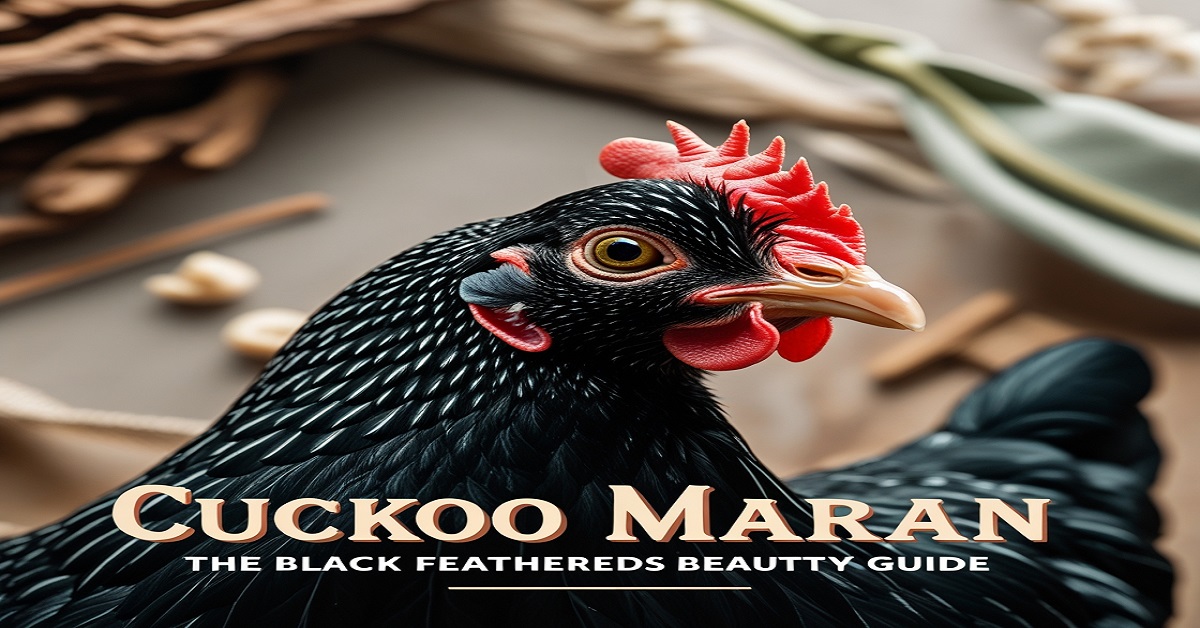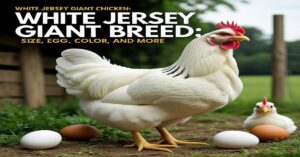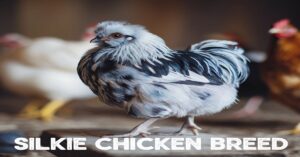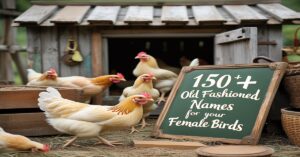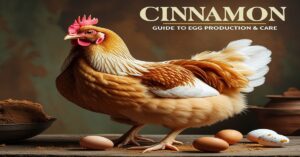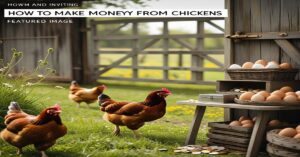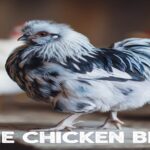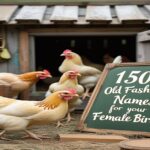The Cuckoo Maran is a remarkable chicken breed that has captured the hearts of poultry enthusiasts around the world. Known for its distinctive cuckoo pattern of black and white feathers, this chicken breed is prized not only for its unique appearance but also for its ability to lay some of the darkest brown eggs you’ll find. If you’re thinking about adding Cuckoo Maran chickens to your flock, this in-depth guide will provide you with everything you need to know.
From their fascinating history to their care requirements, temperament, and egg production, we’ll dive into every important detail.
Certainly! Here’s a table summarizing the key facts and figures about the Cuckoo Maran chicken breed:
| Attribute | Cuckoo Maran Chicken |
|---|---|
| Origin | Marans, France (mid-1800s) |
| Size (Rooster) | 7 pounds (3.18 kg) |
| Size (Hen) | 6 pounds (2.72 kg) |
| Lifespan (In confinement) | 7 years |
| Lifespan (Meat birds) | 2–3 years |
| Egg Production Rate | 220–280 eggs per year |
| Egg Size | Medium to Large |
| Egg Color | Dark Brown (can range from medium to chocolate brown) |
| Age of Egg Laying Start | 24–36 weeks |
| Temperature Tolerance | Cold Hardy (better in moderate to cold climates) |
| Weight (Eggs) | Medium to Large |
| Feather Pattern | Cuckoo Pattern (black and white stripes) |
| Health Risks | Parasites, Heat Stroke, Foot Problems |
| Broodiness | Occasionally Broody, good maternal instincts when broody |
| Meat Production | Dual-purpose breed (used for both meat and eggs) |
| Rooster Temperament | Calm, can be dominant in flock hierarchy |
| Hen Temperament | Friendly, good with other chickens |
| Predator Protection Needs | Moderate (safe housing required) |
| Hardiness | Cold Hardy, but prone to heat stroke in extreme heat |
| Feed Requirements | Balanced diet with vitamins and calcium |
Introduction to Cuckoo Maran Chickens
The Cuckoo Maran is considered one of the most attractive chicken breeds due to its striking appearance and calm nature. It’s a dual-purpose breed, meaning it excels in both egg production and meat production, making it an excellent choice for homesteaders and backyard chicken keepers. This breed produces dark brown eggs, which have gained a reputation for their deep, rich color and superior taste. But the Cuckoo Maran is not just about eggs—it’s also known for its hardiness, gentle disposition, and robust health. Whether you’re a beginner or an experienced chicken keeper, this breed can thrive in various conditions, adding value to your flock in more ways than one.
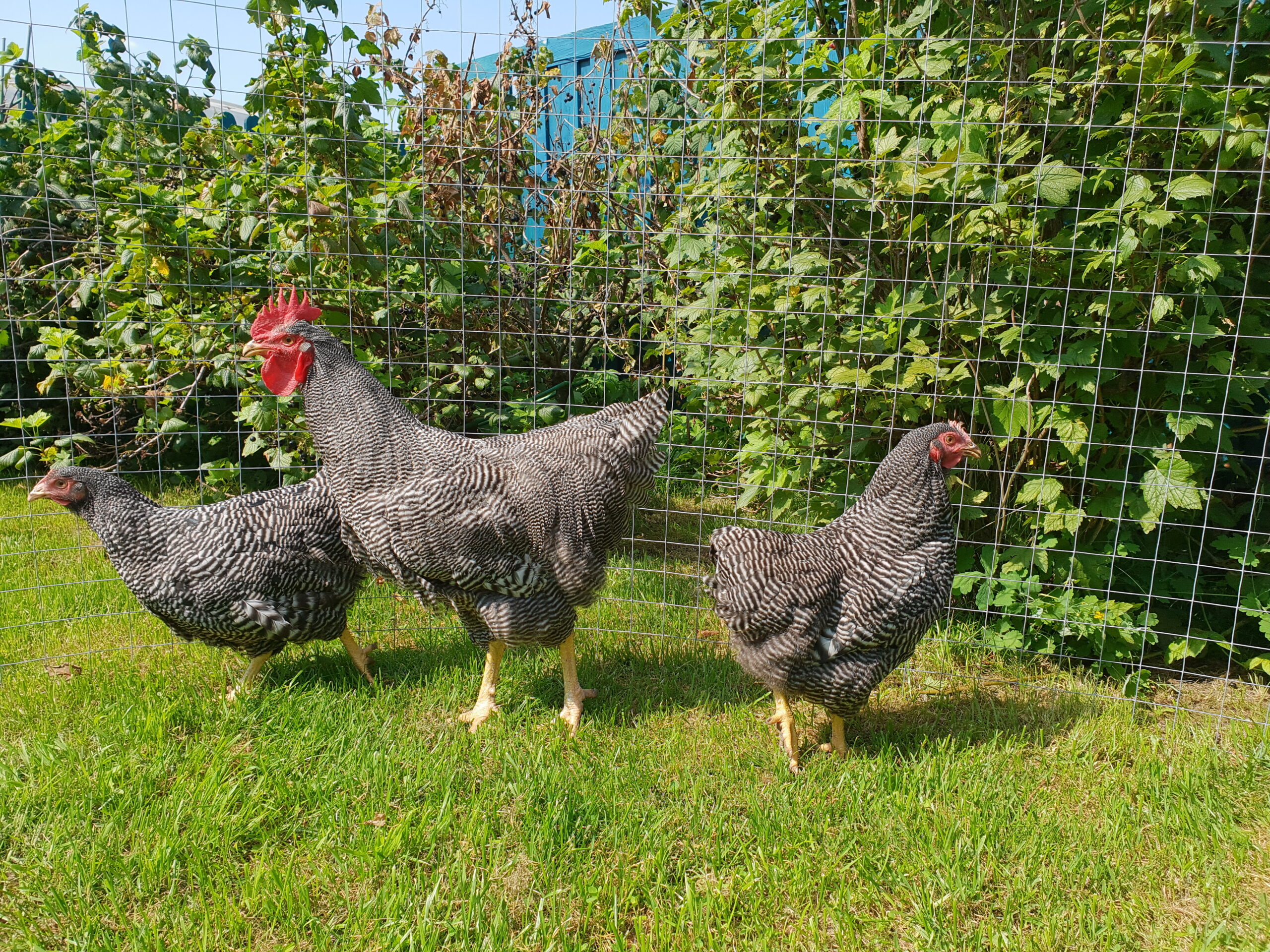
History of the Cuckoo Maran Chicken
The history of the Cuckoo Maran chicken breed is as rich and intriguing as the bird itself. The breed originated in Marans, a town in southwestern France, during the mid-1800s. The original aim was to develop a breed of chicken that could thrive in the French climate and provide a reliable source of meat and eggs. Early Marans breeders focused on creating a chicken that was not only hardy but also productive.
The Cuckoo Maran breed was particularly admired for its dark brown eggs. In fact, the dark egg color became one of the breed’s most distinguishing characteristics, setting it apart from other egg-laying chickens that produced lighter-colored eggs. By the early 1900s, the breed had made its way to England, where it quickly gained popularity due to its hardiness and the unique quality of its eggs. Over the years, the Cuckoo Maran has grown in popularity, especially among backyard chicken keepers who appreciate its beautiful plumage and dependable egg production.
However, like many traditional breeds, the Cuckoo Maran faced challenges during the World Wars, as many heritage breeds were displaced by hybrid varieties that were more productive in terms of egg-laying. But today, the Cuckoo Maran has experienced a resurgence, thanks in part to the growing interest in heritage breeds and sustainable farming practices.
Are Cuckoo Maran Chickens Heritage or Hybrid?
The Cuckoo Maran is classified as a heritage breed, meaning it has a long, established history and remains largely true to its original traits. Heritage breeds like the Cuckoo Maran are typically valued for their genetic diversity, natural hardiness, and ability to adapt to a variety of environments. These chickens are the result of natural selection and careful breeding over the years.
Unlike hybrid breeds, which are often bred specifically for commercial purposes (such as high egg production or uniformity), heritage breeds like the Cuckoo Maran retain their traditional traits. This means that the Cuckoo Maran is not genetically modified or selectively bred for extreme egg production but is instead a breed that produces eggs naturally while retaining other useful characteristics, such as its unique dark brown eggs and cold-hardiness.
For those who want a chicken that is part of the living history of poultry farming, the Cuckoo Maran is a perfect choice. Their ability to maintain traditional characteristics while being productive makes them a wonderful addition to any flock.
Cuckoo Maran Chicken Appearance
When it comes to appearance, the Cuckoo Maran is hard to miss. This breed is known for its distinctive cuckoo pattern—alternating black and white stripes that give the birds a striking, eye-catching look. The term “cuckoo” refers to this unique feather pattern, which is reminiscent of the plumage of the cuckoo bird.
Here are some key features that define the Cuckoo Maran’s appearance:
- Feathers: The black and white striped feathers give the Cuckoo Maran its signature look, with a pattern that resembles the feathers of the Barred Plymouth Rock.
- Size: These chickens are considered a medium-sized breed. The roosters generally weigh around 7 pounds, while hens weigh approximately 6 pounds. This size makes them well-suited for both meat production and egg production.
- Comb and wattles: The Cuckoo Maran has a single comb that is bright red, accompanied by equally red wattles. These features add to the chicken’s overall attractive appearance.
- Legs: They have bare legs, which helps them adapt to colder climates. The lack of feathering on the legs also makes them more resistant to foot problems that can affect other breeds.
- Body shape: The body is sturdy and robust, reflecting the breed’s dual-purpose nature.
Overall, the Cuckoo Maran is an aesthetically pleasing breed, making it a favorite among chicken keepers who appreciate not only egg production but also beauty and character in their flocks.
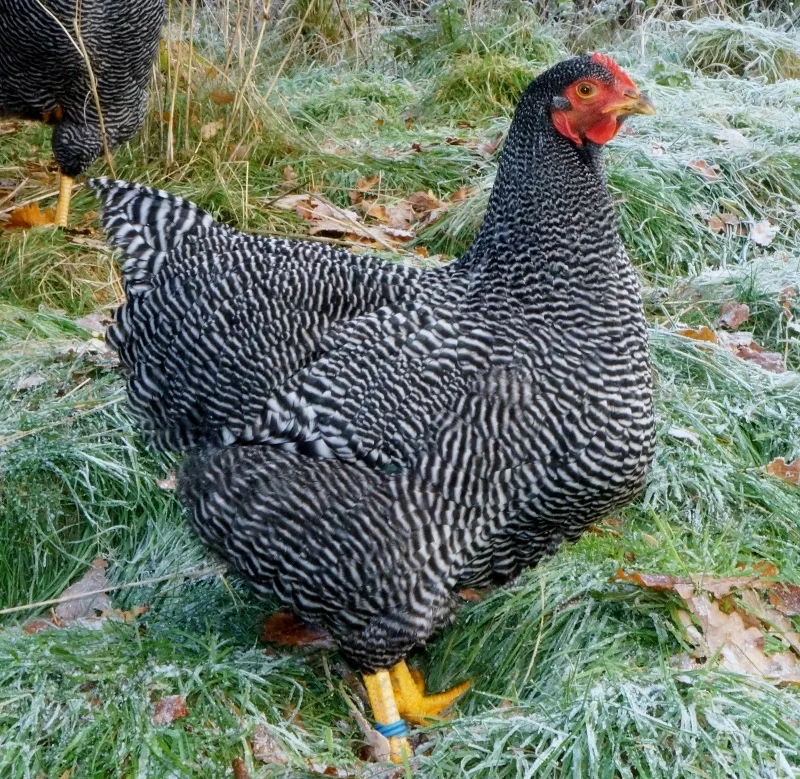
Weight and Size of Cuckoo Maran Chickens
As mentioned earlier, the Cuckoo Maran is a medium-sized breed, with roosters typically weighing about 7 pounds and hens weighing around 6 pounds. This makes them a bit larger than some other heritage breeds but still manageable for most backyards. The size and build of the Cuckoo Maran also make them suitable for meat production—a key reason why they are classified as a dual-purpose breed.
Their robust size ensures they are resilient in different climates, with their feathering offering protection from the cold. However, as with all breeds, it’s important to monitor their environment, as their size and weight may make them prone to joint problems as they age.
Lifespan of Cuckoo Maran Chickens
The Cuckoo Maran is a relatively long-living breed, especially when compared to commercial hybrid chickens. In optimal conditions, the Cuckoo Maran can live up to 7 years in confinement. However, if raised primarily for meat production, their lifespan may be shorter, typically around 2 to 3 years.
Since they are dual-purpose birds, Cuckoo Marans are not only valuable for their eggs but can also be raised for their meat. While not as large as some of the heavier meat breeds, their tender and flavorful meat makes them a good option for home consumption. It’s also worth noting that Cuckoo Marans tend to begin egg-laying earlier than other breeds, typically starting around 24 to 36 weeks of age. This makes them a productive option for those looking for chickens that produce eggs in a relatively short amount of time.
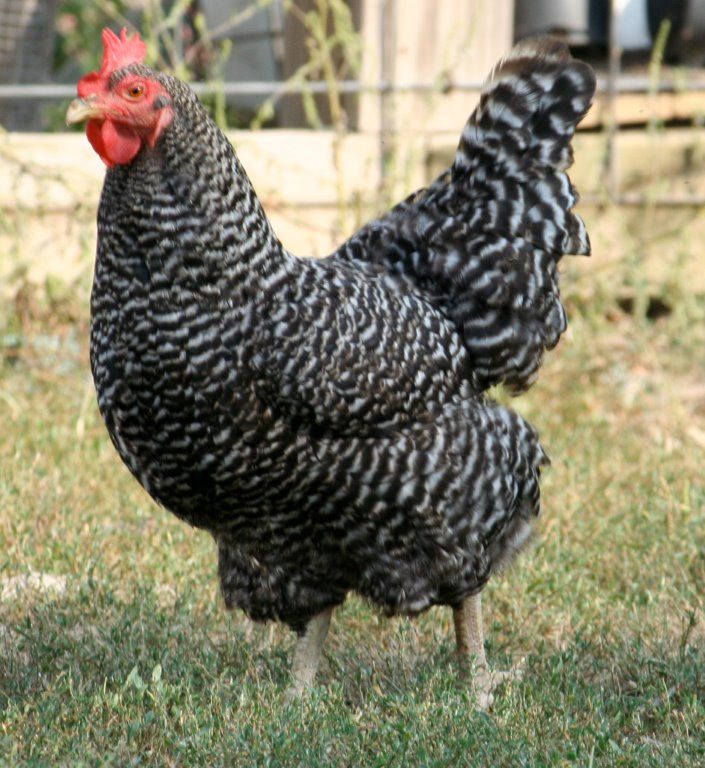
Egg Production: What to Expect from Cuckoo Marans
One of the most highly sought-after features of the Cuckoo Maran is its ability to lay dark brown eggs. These eggs are not only visually appealing but also taste delicious, often having a richer, fuller flavor compared to lighter-colored eggs from other breeds. If you’re seeking dark brown eggs, Cuckoo Marans are one of the best options available.
Here’s what you can expect in terms of egg production:
- Egg color: The eggs are known for their dark brown color, which can range from medium to dark brown. Some eggs are so dark they almost appear chocolate-colored.
- Egg size: The eggs produced by Cuckoo Marans are typically medium to large in size, making them perfect for cooking and baking.
- Egg production rate: You can expect your Cuckoo Maran hens to lay anywhere from 220 to 280 eggs per year. This makes them a reliable and steady source of eggs throughout the year.
As an added bonus, Cuckoo Marans are consistent egg layers, which is one of the reasons they are so beloved by backyard poultry keepers.
Breeding Cuckoo Maran Chickens
Breeding Cuckoo Marans requires attention to detail, especially when it comes to selecting breeding stock. Because of their distinctive appearance and dark brown egg-laying abilities, it’s important to maintain genetic diversity within your breeding program.
Here are some breeding tips for Cuckoo Marans:
- Genetic diversity: To avoid inbreeding, always select healthy breeding stock that exhibits good traits—such as consistent egg production and good health.
- Focus on egg traits: The goal of breeding should be to reinforce the dark brown eggs that are the hallmark of the breed.
- Health checks: Regular health checks on your breeding stock are essential to ensure they’re free of disease and parasites.
While Cuckoo Marans may not be the most consistently broody of chicken breeds, they do have the ability to incubate their own eggs if desired. If you’re looking for a self-sufficient flock, these hens can sometimes take on the responsibility of raising their own chicks.
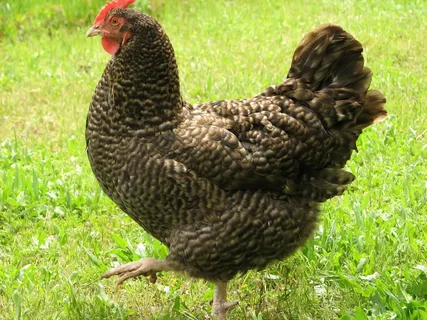
Broodiness and Mothering Ability in Cuckoo Marans
Though Cuckoo Marans are not the most broody chickens, they do have strong maternal instincts. When they do go broody, they are excellent mothers, protecting their eggs and later raising their chicks with care. If you’re interested in hatching eggs naturally, a Cuckoo Maran hen can make a good choice, especially if you don’t want to rely on artificial incubation.
Hardiness and Adaptability of Cuckoo Marans
The Cuckoo Maran is highly regarded for its hardiness. They are known to handle colder temperatures better than many other breeds due to their robust body and feathering. The breed has a strong resistance to cold weather, and its bare legs make them less susceptible to frostbite.
However, like many chickens, the Cuckoo Maran can struggle in extreme heat. In hot climates, it is important to provide plenty of shade, fresh water, and good ventilation. Cuckoo Marans are prone to heat stroke if not kept in a cool and shaded environment.
In general, these birds thrive best in moderate climates, where the temperature remains stable. If you’re living in a particularly hot region, you may want to consider another breed that is more heat-tolerant.
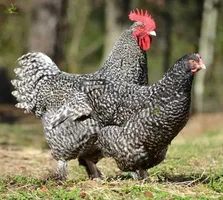
Common Health Issues in Cuckoo Maran Chickens
While Cuckoo Marans are relatively healthy chickens, they can experience some common issues that are typical for any breed. Here are some of the health problems you may encounter:
- Parasites: As with all chickens, Cuckoo Marans can suffer from internal and external parasites such as worms, mites, and lice. Regular deworming and pest control are essential for keeping your birds healthy.
- Heat stroke: In hot climates, be sure to provide adequate shade and water to prevent your chickens from getting overheated.
- Foot problems: Because Cuckoo Marans have bare legs, they are less prone to foot issues like bumblefoot. However, keeping their environment clean is crucial to avoid any potential infections.
Ensuring a good diet, access to clean water, and regular health checks will help prevent these issues and keep your Cuckoo Marans in top shape.
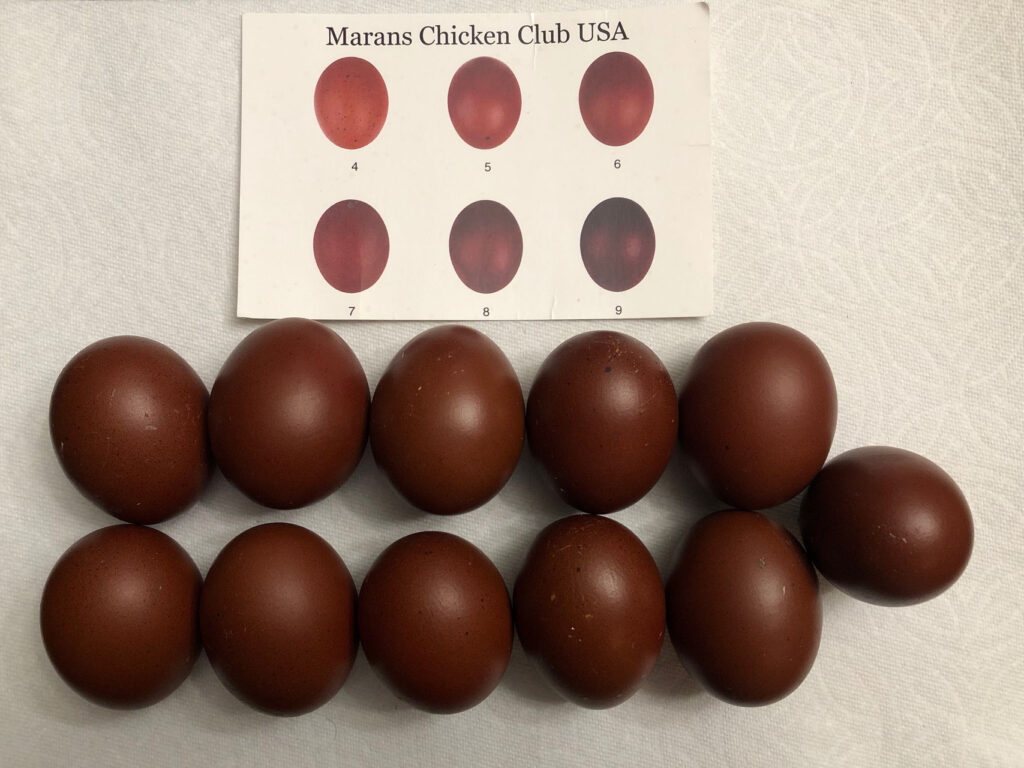
FAQs
Are Cuckoo Maran chickens rare?
Yes, Cuckoo Maran chickens are considered rare, and efforts to breed and preserve them help maintain their population.
What are Maran chickens known for?
Marans chickens are valued for both their dark brown eggs and their meat, making them a dual-purpose breed from the Charente-Maritime region in France.
Why are Maran chickens so expensive?
The breeding process for Marans, focused on selecting hens that produce dark eggs over time, contributes to their higher cost.
What is a Cuckoo Maran chicken?
The Cuckoo Maran is a heritage breed from France, known for its dark brown eggs, although it isn’t recognized by the American Poultry Association.
Are Cuckoo Marans friendly?
Cuckoo Marans are gentle and get along well in mixed flocks, making them a great choice for both confined and free-range environments.
How many Cuckoo Maran eggs per year?
Cuckoo Marans typically lay between 220 and 280 eggs annually, making them a reliable egg layer.
What is the lifespan of a Cuckoo Maran chicken?
Cuckoo Marans can live up to 8 years, with hens starting to lay eggs at around 5-6 months old.
How long until Maran lay eggs?
Maran chickens usually begin laying eggs between 24 and 26 weeks of age after getting settled into their environment.
How long do Maran hens live?
With proper care, Maran hens can live between 5 and 8 years, continuing to lay eggs for most of that time.
What size eggs do Cuckoo Marans lay?
Cuckoo Marans lay medium-sized eggs, typically between 200 and 220 eggs per year.
Are Marans good layers?
Marans are not the most prolific layers, but they still produce about 200 eggs annually, making them solid choices for backyard egg production.
Are Marans good for beginners?
Thanks to their calm nature, Marans are a great option for beginner chicken keepers, though they may require extra care in hot climates.
Do Marans lay in winter?
Marans continue laying throughout the year, though their egg production may slow down during hot weather.
What color are Cuckoo Maran eggs?
Cuckoo Marans lay dark reddish-brown eggs, which are highly sought after for their unique appearance and flavor.
What is the difference between a Cuckoo and a Copper Maran?
Cuckoo Marans are larger and lay slightly lighter brown eggs compared to the richer, darker eggs produced by Copper Marans.
What age do Marans start laying?
Marans begin laying eggs around 6 to 7 months of age, though it’s possible they may start as late as 8 or 9 months.
Do Marans eggs get darker?
Marans eggs tend to darken in color during their initial laying cycle, with the eggs lightening as the hen ages.
Why are Copper Marans so expensive?
Copper Marans are expensive due to their exceptional egg-laying capabilities and distinctive appearance, particularly their dark eggs.
At what age do Cuckoo Marans lay eggs?
Cuckoo Marans typically begin laying eggs at around 6 months old, with some hens starting a bit earlier.
What is the origin of the Cuckoo Maran chicken?
Cuckoo Maran chickens originated in Marans, France, in the 1800s and are known for producing dark brown eggs and being hardy.
How big do Cuckoo Maran chickens get?
Cuckoo Maran roosters weigh about 7 pounds, while hens are slightly lighter at 6 pounds, making them a medium-sized breed.
What color are Cuckoo Maran eggs?
Cuckoo Marans lay dark brown eggs, often with a rich chocolate hue, highly appreciated for their flavor and unique color.
How many eggs do Cuckoo Maran chickens lay?
Cuckoo Maran hens produce between 220 to 280 eggs annually, offering a steady supply of dark brown eggs.
Are Cuckoo Maran chickens good for meat production?
Yes, Cuckoo Marans are a dual-purpose breed, suitable for both egg production and tender, flavorful meat.
How long do Cuckoo Maran chickens live?
Cuckoo Marans can live up to 7 years with proper care, although their lifespan may be shorter if raised primarily for meat.
Are Cuckoo Maran chickens hardy in cold weather?
Cuckoo Marans are well-suited to cold climates, thanks to their robust bodies and feathering that help them handle cooler temperatures.
What is the temperament of Cuckoo Maran chickens?
Cuckoo Marans are friendly and calm, with a non-aggressive nature, although roosters can sometimes display dominance in the flock.
Are Cuckoo Maran chickens noisy?
Cuckoo Marans are moderately noisy, especially their crowing, which may not be ideal for urban or suburban settings.
How do I breed Cuckoo Maran chickens?
Breeding Cuckoo Marans involves selecting healthy birds with good egg production and dark egg color, with a focus on maintaining their productivity.
What are some common health problems in Cuckoo Maran chickens?
Cuckoo Marans can be prone to parasites and heat stroke, so regular health checks, pest control, and shade are important for their well-being.
Are Cuckoo Maran chickens a good choice for beginners?
Cuckoo Marans are an excellent choice for beginners due to their friendly temperament, hardiness, and ease of care in various climates.
Do Cuckoo Maran chickens need special housing requirements?
Cuckoo Marans don’t have specific housing needs, but a clean, safe coop with adequate space and protection from predators is essential.
Conclusion: Is the Cuckoo Maran Chicken Right for You?
The Cuckoo Maran is a beautiful and versatile breed that can provide excellent egg production, flavorful meat, and a calm, friendly disposition. Whether you’re looking to raise them for their dark brown eggs, or for their meat, or simply as part of a mixed flock, the Cuckoo Maran has much to offer.
They are a great choice for cold climates due to their hardiness and cold tolerance, and they are generally easy to care for. While they may not be as suitable for extremely hot climates or urban environments due to their noise level, they are a dual-purpose breed that adds value in many different ways. If you’re looking for a breed with a rich history, beautiful appearance, and strong egg production, the Cuckoo Maran could be the perfect addition to your flock.
Read more knowledgeable blogs on Flowy Magazine

James Clair is a passionate writer and researcher with a deep fascination for animal behavior and its intricate connection to human life. With a background in [relevant field of study, e.g., zoology, psychology, ethology], James has spent years studying the natural world, focusing on how animals’ actions and instincts impact human emotions, behavior, and society.
His expertise in [specific topics or regions of focus, e.g., canine psychology, animal communication, wildlife conservation] has led to numerous published works and collaborations with renowned researchers and institutions. Through his work at Flawy Magazine, James aims to bridge the gap between scientific research and public understanding, offering insightful, accessible articles that explore the complex relationship between humans and animals.
When he’s not writing, James enjoys [personal hobbies or interests, e.g., hiking in nature, volunteering at animal shelters, photography] and is an advocate for [cause or charity related to animals or conservation]. His mission is to inspire readers to see animals not just as companions or creatures of the wild, but as beings whose behavior holds valuable lessons for us all.
